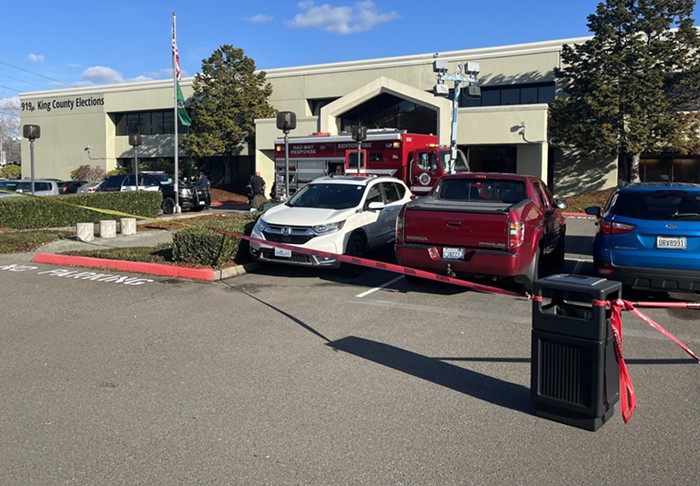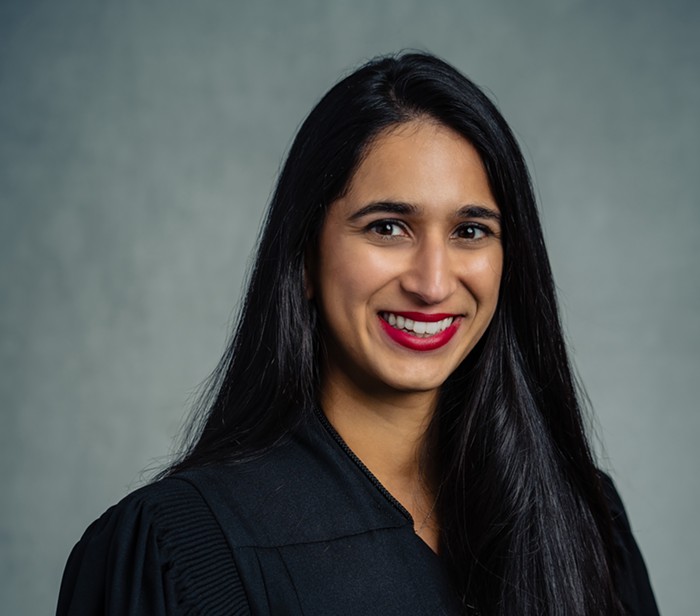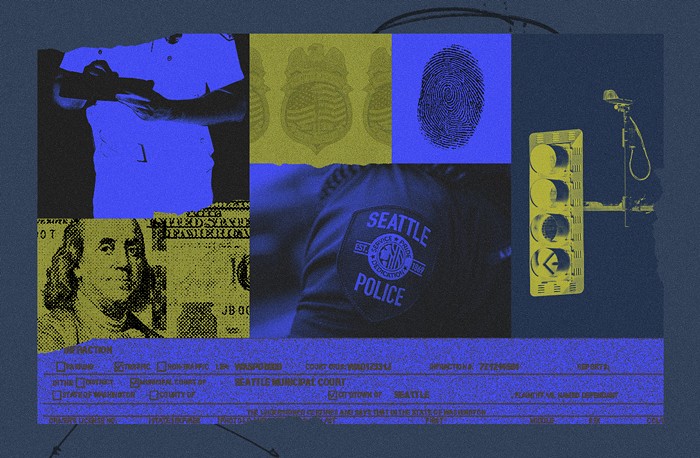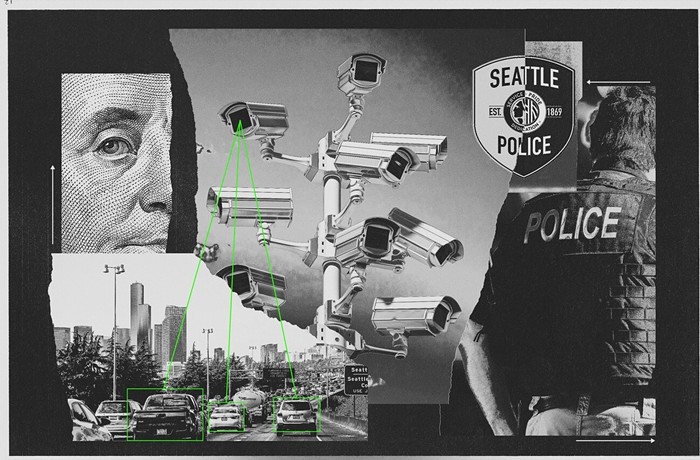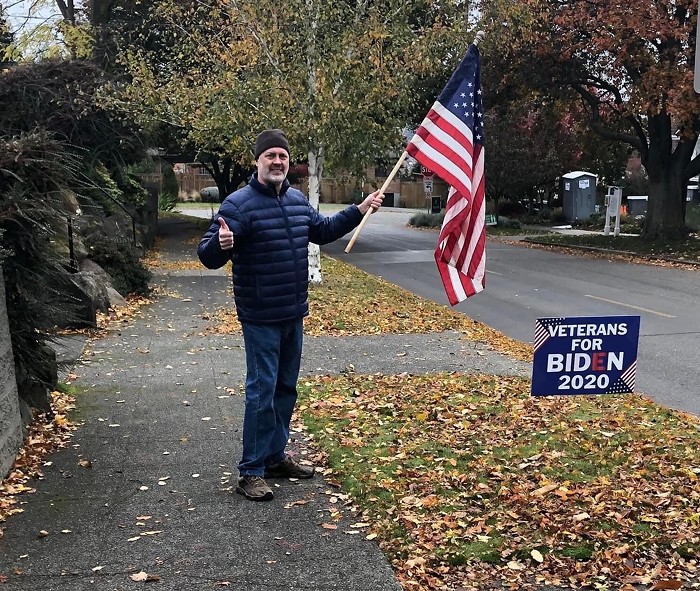
While the City of Seattle swept her home at Ballard Commons, an unhoused woman cried out to the city workers, mutual aid groups, and other community members packing up the park.
“Why don’t they come up with a solution that actually makes sense?” she said of the city. “Put people indoors. Do they think we want to be out here in the middle of winter? No! We’re not crazy.”
That was three weeks ago. It was 40 degrees that day.

Monday, Dec. 27, the city shivered under a high of 23 degrees, the coldest day in 31 years. The risk associated with hypothermia in the cold weather was greater than the risk of contracting COVID-19, according to Public Health – Seattle & King County. That afternoon, Dr. Stephen Morris, an assistant professor of emergency medicine at UW Medicine, told the Seattle Times that Harborview Medical Center saw one cold weather-related death, two “critically ill” patients, and approximately six people admitted for hypothermia.
WHEEL, a grassroots organization of homeless and formerly homeless women who host Women in Black vigils when homeless people die in the county, reported that 178 unhoused people in King County died outside or by violence in 2021. By WHEEL’s numbers, eight of those unhoused people died of hypothermia.
The estimate of how many people in King County sleep outside varies, and because of COVID-19, most available numbers are dated. In 2019, shelter operators and volunteers counted over 11,000 people who do not have a permanent place to sleep at night; about 5,000 of those people sleep outside.
“We are really setting people up to just die in some unknown place to be discovered after the snow melts,” said Tye Reed, a Seattleite who does mutual aid work with the Transit Riders Union.
This week, I searched a handful of encampments across the city. I found what appeared to be empty tents all but buried in the snow.

With the city council on vacation and Mayor Jenny Durkan's legacy already memorialized by exit interviews, Seattle has scrambled to keep its unhoused residents alive during this early dump of snow. It opened a couple hundred additional emergency shelter beds, offered hotel referrals and bus passes, and coordinated outreach efforts by the HOPE Team, Health One, the police department’s Community Service Officer team, and Seattle Parks and Recreation.
But in emergencies like this one, Seattle already has hundreds of community members on the ground ready to help their neighbors who live outside.
Mutual aid is a decentralized, non-hierarchical practice where people work voluntarily and cooperatively to meet the needs of everyone in the community. In theory, everyone involved should benefit. A mutual aid worker with Greenwood Mutual Aid likened it to a union of the people against “disaster capitalism.”
“No, mutual aid will never replace the state, but it's a way for the state to bow down to the people that it's supposed to be serving,” she said.
During the Black Lives Matter movement in the summer of 2020, Seattle saw a renaissance of mutual aid. By the end of the year, just about every radical and their mother had read Seattle University professor Dean Spade’s how-to guide for the organizational structure. The role of mutual aid during 2020 was often to empower protests to stay out on the streets, according to a mutual aid worker with Greenwood Mutual Aid, which was born out of the summer protests.
“Then, keeping out on the streets meant being in solidarity with people that have been on the streets since forever,” the mutual aid worker said.


Seattle’s mutual aid network consists of many neighborhood-specific groups that mostly serve unhoused neighbors. While mutual aid projects predate the 2020 protests, this will be Greenwood Mutual Aid’s second winter of encampment outreach.
The group visits one encampment on Saturdays – they used to visit four, but many have been swept or moved into housing. Last Saturday, the day Mayor Durkan declared a civil emergency, Greenwood Mutual Aid brought warm clothes and heat sources to their unhoused neighbors. One worker estimated 20 people were sleeping at that site Saturday. She handed out flyers about the city’s emergency shelters, but because of how far they were and the risk of having their belongings stolen, she was unsure how many would take up the city’s offer. Later in the week, only about half of the site’s residents were home.
King County Metro was down to just 60 core bus routes due to the weather this week. The department does not have data for ridership during this time, but a spokesperson said shelter is accessible via bus. One bus driver who drives routes around encampments and shelters downtown said less than a quarter of his night-time ridership appeared to be seeking shelter.
Saturday, Dec. 25, the city opened six emergency night-time shelters for a total of about 330 additional bed spaces, the majority in lower Queen Anne and Pioneer Square. The first night, the shelter space was vastly underused with only about 40% capacity at the highest occupancy site, Exhibition Hall Night Shelter, the Seattle Human Services Department reported. Even on Monday, with a record-breaking cold, some of the few hundred additional bed spaces remained empty.
Reed, who does mutual aid work in Ballard, called the city’s response “laughable.” She wondered, “What is someone in Ballard gonna do about a downtown warming center?”
“The city has been deliberate in the way that it's failed to do very basic obvious fixes that they wouldn't even have to manage, but could really empower the community to manage,” Reed said. “Instead the city decided to throw up a couple of community centers, not staff them very well, make sure messaging is extremely confusing, and make sure that transit isn’t even accessible to those who would need to get there.”
Reed’s crew was also concerned with keeping people warm where they are this week. She said groups she works with have collected thousands of dollars for thermal underwear, coats, socks, and gloves. Even though her teams have the money, they could not buy “life-saving” propane amid a shortage.
Reed said she is interested in replicating the work of other mutual aid groups that have designed a heater that runs on hand sanitizer or alcohol. Sanitizer and alcohol are very flammable and propane is considered a safer option. Reed said the city could do more to save propane for the unhoused ahead of the deadly cold.
“The city knows winter happens every year,” said Katie, who does mutual aid in north Seattle. “So the fact that the city puts it all off till the last minute to figure out these things, it's just awful.”
Katie always has an eye open for winter mutual aid supplies – she collects hand warmers year-round. She usually spends about a day and a half every week doing encampment outreach, but in the cold, she drives around every day, her car stocked with supplies and hot food. She said she can’t go more than a mile before running into somebody that needs something. The most in-demand resource in Katie’s experience is Narcan, which can treat a narcotic overdose in an emergency. In the winter, Katie sees more drug use to “numb the pain of the cold.” Anticipating this, she put away about 100 doses for winter as the substance is increasingly difficult to get her hands on. On Tuesday, she said she was almost out.
Some mutual aid workers described this week as both tragic and inspiring. Katie saw an unhoused woman trudge through the snow with plastic bags around her feet to do a wellness check on her unhoused friend; an unhoused man gave Katie the last of his fuel to help someone who ran out of gas. She was able to give the woman new boots and the man a refilled gas can, but she was amazed by how often she sees unhoused people “moving mountains to help others when they have nothing.”
Regardless of how inspiring the mobilization of mutual aid or the kindness of the unhoused, Char Smith, who does mutual aid in Beacon Hill, told The Stranger, “We shouldn’t have to be the ones doing this.”
Mutual aid workers are bold critics of the city, but they are not direct adversaries. During last summer’s heatwave, another weather emergency that brought mutual aid together, Katie remembered some coordination between the city and mutual aid groups. In this winter crisis, the city deployed outreach workers to do some of the same things mutual aid groups do, and some mutual aid workers would like to see those efforts scaled up. The city’s strength is its money – that’s a pitfall for self-funded mutual aid groups, but the small scale may be crucial to the spirit of these projects.
There’s a tension: if the city funds more outreach, some mutual aid workers do not believe it could be done as empathetic as their hyper-local and voluntary service to their neighbors.
“When we talk about community care, the government is not in a position to really help people,” Reed said. “People in your community know you and know the people living outside much better than a city worker who has to drive up from Auburn to go to their city job so they can make $18 an hour to try to talk down or serve somebody who lives in downtown Seattle.”
Reed said the government should empower communities to do this work, but there is no consensus with Seattle’s loose mutual aid network. Smith said he worried that city funding to mutual aid would result in Seattle's bureaucracy absorbing the projects, crushing their anarchist spirit. Right now, mutual aid is in the position to turn on a dime, Smith said. In the face of a crisis, they are not bound by official processes like the city.
Ultimately, even with the freedom to help their neighbors however they see fit on their small budgets, mutual aid groups know they are just a band-aid on the wound.
“Giving someone a tent and a sleeping bag and hand warmer is something, but it's definitely not enough. It doesn't feel great leaving that person being like, ‘I hope you don't die tonight,’” Katie said.
For Katie and other mutual aid workers, cold weather supplies are about the best they can do. As Reed noted, mutual aid does not have the power to house people, or develop housing, or keep rent affordable – the city does.

